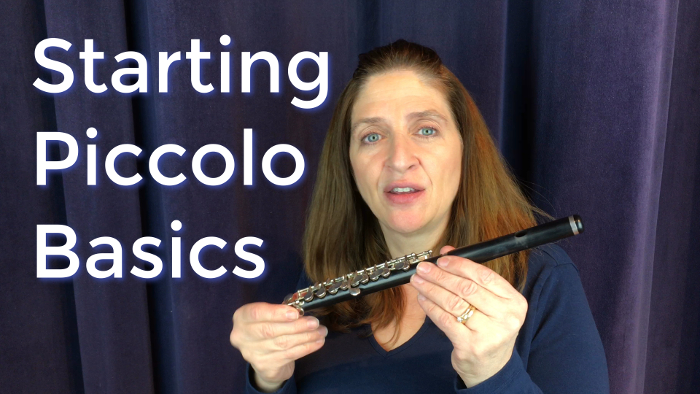Do you have a piccolo? Maybe you have just gotten one for a gift and finally your heart is cured of it’s ache? Are you asking yourself now what to do I do with it? Do you put to your lip and blow?
If you haven’t gotten one yet but plan on purchasing stop reading and go get one!
Now you’ve got your piccolo and its time to put it together. There is no special way to put the piccolo together. Just put it together the normal flute way. When I put my head joint on I pull it out a 1/4 inch because I’ve worked with a tuner and that is generally where my A is in tune. All my notes won’t be in tune but It gives me a good rounded intonation.
Once the piccolo is together you can put it up to the lip and I’m sure, that if you’ve already played the flute, you can make some sounds right away. Or at least you should be able to! You will want to modify your embouchure. If you feel the lip plate in the same spot as you do for the flute then you will need to move the piccolo lip plate up higher on your lip. I find where the flute rests on my lip, then go up from there. If you feel when you start playing that the tone is cracking then you probably need to angle that air just a little bit lower, and move it maybe up a hair on your lip, or down a hair. Experiment with the placement and you will find your best spot.
Another mistake people make when they first start piccolo is to make their embouchure very small and tight. You can keep your embouchure much looser and much more open than you think when you play piccolo. You use your air pressure to get notes on the piccolo, not from pinching. A good place to begin is to see how loose your embouchure can be and still get a tone.
Remember at the beginning of piccolo playing you experiment. Experiment where it’s best on your lip. Experiment how loose your embouchure can be. Pull out your etude book that you’ve been working on, and play a couple of notes on the piccolo on that etude and see where your air should be so that you don’t squeak.
The best way to build your piccolo chops is to play easy etudes.
Be cautious when you want to play up in the 3rd octave. Going too high too soon is a recipe for disaster. When you begin the piccolo, you need to start with low and that means nothing above that second octave. You’ve got to build this embouchure up so it can handle going higher. The Köhler etudes opus 66 are wonderful etudes to begin with when you’re just learning the piccolo. Yes, there are a couple of notes in the Köhler etudes that go above the second octave but not too many. Most of them stay below. Keep your embouchure growing and building in small increments.
In the beginning spend 10 to 15 minutes a day playing piccolo. Don’t spend long, long periods of time. Go back to your flute. Practice. Play the flute. Learn whatever exercises you’re learning and then take 10 or 15 minutes and play the piccolo. I would go through arpeggios. Use your tuner. Play arpeggios with this and etudes and that would be it right at the beginning. Start building the muscles and don’t tax the embouchure too much.
The Dreaded BUZZ
When you go too high too soon what happens is that the lip gets too tight and you start getting a buzz and once you get a buzz between your lips when you’re trying to reach these high octave notes it’s very hard to get rid of that buzz. Go slowly.
Get your piccolo. Learn how to play it by playing low etudes. Move it up on your lip. 10 to 15 minutes a day for a while. You’ll know when you start reaching those 3rd octave notes that you’re playing in your etudes and a 3rd octave note pops up here and there and you realize it’s easy. Then you know that you can probably start adding more higher octave notes to your playing and you can start stretching it to 20 minutes to even 30 minutes a day.
And that’s how you begin on the piccolo.
Enjoy playing your piccolo!
DoctorFlute
Watch me demonstrate this: Starting Piccolo – Basics FluteTips 65
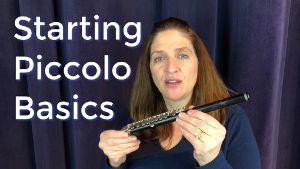
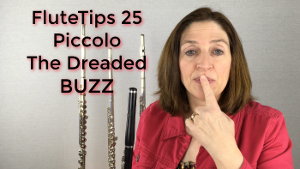
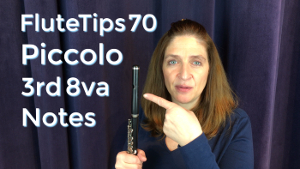

Sattoh for Piccolo and Percussion by Katsutoshi Nagasawa

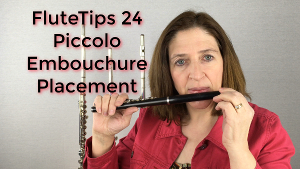
Can I Just Start with Piccolo?

